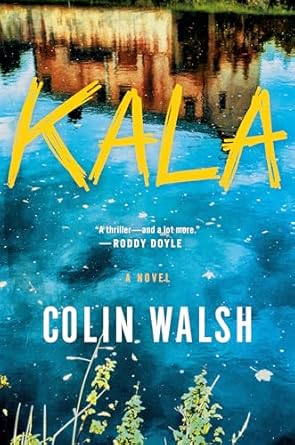3.5 Stars
The last Shari Lapena novel I read was Everyone Here is Lying (https://schatjesshelves.blogspot.com/2023/07/review-of-everyone-here-is-lying-by.html). What Have You Done? has many similarities with this previous offering.
The naked body of 17-year-old Diana Brewer is found in a farmer’s field. Very quickly, Fairhill, Vermont, where nothing ever happens, becomes a town full of suspects. Who killed the well-liked teenager? Was it Cameron Farrell, her controlling boyfriend? Was it Brad Turner, Diana’s track coach who has been accused of inappropriate behaviour towards female students? Was it Joe Prior, the creepy guy who harassed Diana at her job? But then it seems these three are not the only ones who have secrets and are not totally forthcoming during the investigation into Diana’s murder.
The novel has multiple perspectives. Among them are a number of people connected to Diana: her mother, her friends (Riley and Evan), her boyfriend, and her educators (principal, English teacher, track coach). Then there are others more tangentially connected: Mr. Turner’s fiancée and various parents. Diana also narrates brief sections in the first person. This narrative approach creates a long list of potential suspects as the reader becomes aware of people’s actions and motivations which cause them to lie. Unfortunately, the distinctiveness of one perspective makes it easy to identify the killer.
Diana’s return as a ghost to provide her point of view is, I think, unnecessary. She doesn’t remember who killed her, presumably having blocked it from her memory because of the trauma, so she has nothing to add that will provide clues to her murderer’s identity. Most of her comments are about the grieving of her mother and her friends. What she mentions the reader already knows from others, so this supernatural element seems purposeless.
Of course it is not just Diana’s life that is destroyed. As secrets are uncovered, it’s obvious that the lives of many are turned upside down and will never be the same. The fallout may include marriages and careers being damaged beyond repair. Parents question how well they know their children. And people become suspicious of others, even loved ones.
Diana makes a comment at one point: “How many ways, I think, can a girl be assaulted?” This statement summarizes the theme of violence against women that permeates the book. Diana is harmed by other people besides her killer. She and other girls are subjected to unwanted sexual attention and suffer at the hands of men wanting to control their lives. And those who should protect them are dismissive and negligent.
This is an enjoyable book, and its short chapters make it a quick and easy read as well. Though it is not exceptional, I would classify it as a decent thriller perfect for a summer read.
Note: I received an eARC from the publisher via NetGalley.








